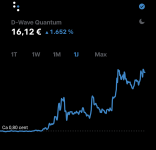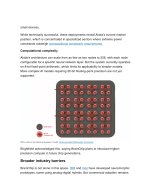In this 29 April article about the Future of Neuromorphic AI in Electronic Warfare, Steven Harbour not only confirms a
partnership between Parallax Advanced Research and Intel (no surprise here, as he already used to collaborate with them closely for years while at SwRI), but also one between
Parallax Advanced Research and BrainChip:
Parallax Advanced Research and the Future of Neuromorphic Artificial Intelligence in Electronic Warfare
Published on
Apr 29, 2025
The convergence of artificial intelligence and defense technologies is poised to redefine the future of electronic warfare (EW). This shift, driven by third-generation AI techniques like spiking neural networks (SNN) and neuromorphic research, represents a critical step forward in equipping the U.S. military with innovative and adaptable solutions. We spoke with Dr. Steven Harbour, Parallax Advanced Research director of AI Hardware Research and a leading expert in neuromorphic research, to explore how his team is advancing AI capabilities and addressing emerging challenges in defense.
Parallax Advanced Research and Southwest Research Institute (SwRI) EW Team; left to right: Mr. Justin S. Tieman, Principal Engineer, SwRI; Mr. Keith G. Dufford, Senior Program Manager, SwRI; Mr. David A. Brown, Institute Engineer; and Director AI Hardware Research and Neuromorphic Center of Excellence, Parallax; Dr. Steven D. Harbour
Exploring AI’s Next Frontier
Traditional AI excels in tasks it has been trained on, demonstrating precision in recognizing familiar patterns and processing expected queries. However, Harbour highlights a significant limitation: AI's brittleness when confronted with the unexpected.
Humans, on the other hand, adapt to the unknown through cognitive problem-solving, a capability that AI systems must emulate to address future challenges effectively.
SNNs, inspired by the human brain’s functionality, offer a promising solution. Unlike traditional feedforward neural networks rooted in inferential statistics, SNNs excel in rapid decision-making under uncertainty, making them particularly suited for dynamic environments like electronic warfare.
Scaling Neuromorphic Systems
Parallax is at the forefront of advancing third-generation AI algorithms, partnering with Intel and Brainchip to develop scalable neuromorphic hardware.
In terms of deployment, neuromorphic processors can be integrated into existing electronic countermeasure (ECM) pods, widely used in both Air Force and Navy operations. These pods, which are part of strike packages including crewed and uncrewed aircraft, offer a clear pathway for fielding these advanced systems across the Department of Defense (DoD).












